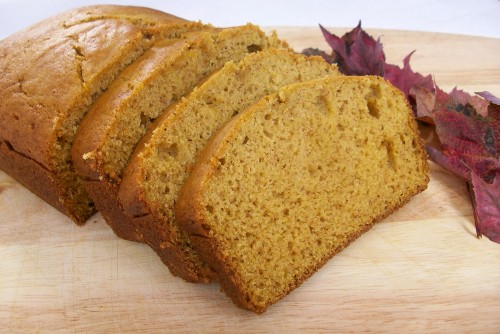The leaves are changing and starting to fall. The temperature is also dropping, too fast for my liking. As long as I have pumpkin bread, everything is fine. This recipe has become a favorite of ours. The original recipe did not call for nutmeg, but I added it. I think nutmeg and pumpkin go together wonderfully. The bread was nice and moist. When you are stuck inside on rainy cold day, make sure you have all these ingredients and your rainy day will become brighter.
Pumpkin Bread:
- 1 (16 oz.) can pumpkin or 1 1/2 cups fresh pumpkin
- 1 2/3 cups sugar
- 2/3 cup vegetable oil
- 2 teaspoons vanilla
- 4 large eggs
- 3 cups all purpose flour
- 2 teaspoons baking soda
- 1 teaspoon salt
- 1 teaspoon ground cinnamon
- ½ teaspoon ground cloves
- 1/8 teaspoon ground or fresh nutmeg
- ½ teaspoon baking powder
- Move oven rack to low position so that tops of pans will be in center of oven. Heat oven to 350 degrees. Grease 2 loaf pans.
- Whisk together the flour, baking soda, salt, cinnamon, cloves, nutmeg and baking powder.
- In a separate large bowl, mix pumpkin, sugar, oil, vanilla, eggs. Stir in dry ingredients. Pour into pans.
- Bake loaves for 50-60 minutes or until toothpick inserted in center comes out clean. Cool 10 minutes in pans.
Source: slightly adapted from Dine and Dish



